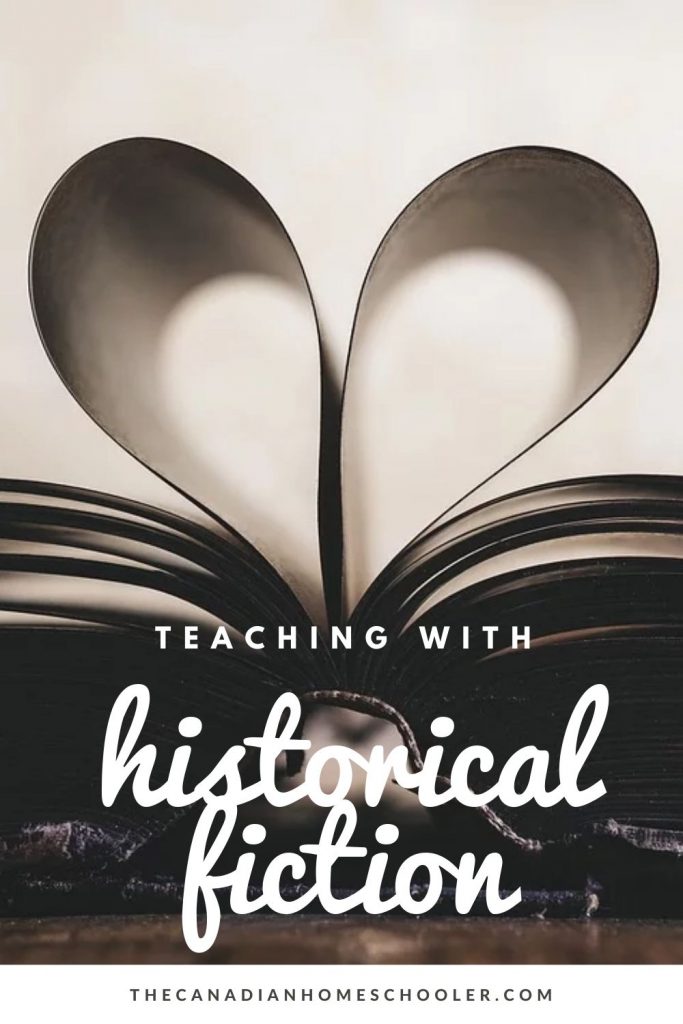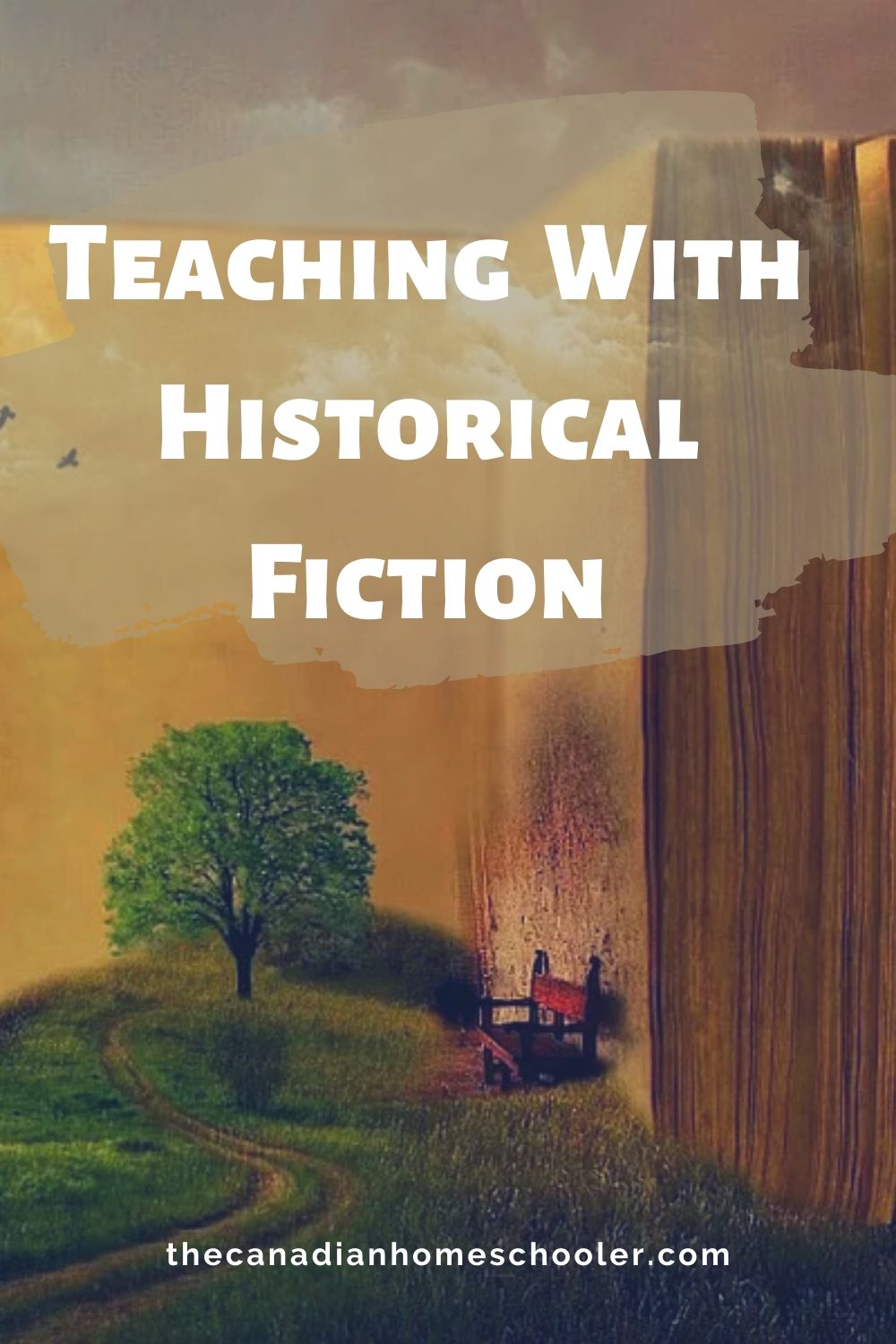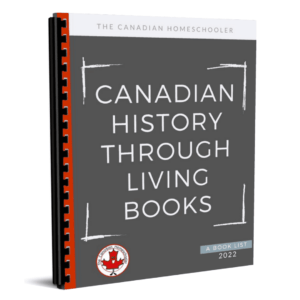There are many ways to study history to your homeschool, but teaching with historical fiction offers some of the most effective lessons. In this post, Canadian author Roderick Benns shares five reasons why using fiction to study the past works so well.

1. Historical fiction will grab a student’s curiosity more quickly than a text book.
Educators who choose historical fiction novels to begin a lesson have an advantage compared to those who begin with non-fiction. Historical fiction novels for use in social studies and history captivate an audience in a way most non-fiction cannot, at least for children and youth.
Historical fiction uses exciting, often adventure-driven plots. In the rich stories, there are odd and colourful characters captured at key moments in time. These characters populate the villages and towns where settlers once lived and where nations were born. In historical fiction novels, the characters tend to be drawn from various aspects of society – whether farm life, business, politics, clergy or otherwise. Each character’s unique personality, as rendered in a novel, helps to bring alive the society as it existed during the period written about.
The setting may be the rural Canadian prairies a hundred years ago or city life in Halifax in the 1860’s. But the setting is illuminated in a way not always possible with non-fiction. The historical fiction author is expected to take the time to truly give a sense of what life was like for characters living in this area at this time. Their concerns, hopes, dreams and challenges help illuminate day-to-day life for the time period studied.
Historical fiction is well used when introducing a subject (say, western settlement or pre-Confederation Canada) because it is a narrative of the time period in question, not just a recitation of facts. If there are famous Canadians used in the historical fiction piece, this also helps clarify their personalities and foreshadow their lives to come at key moments in history, while also highlighting the setting.
Once a student has read the historical fiction book and has been fully immersed, this is a great time to introduce non-fiction texts and sources to bring it all together. While historical fiction novels should never be used as the only source in teaching a subject, they are perfect for introductions, then for supplemental use, such as book studies. In the end, this creates a fuller, more complete understanding of the lives and time period being studied.
2. Teaching with historical fiction creates more equity.
In a group learning dynamic (whether in a classroom or in a smaller home school group) students have varying degrees of prior knowledge from which to draw from. In defining ‘prior knowledge’ we now know that students learn more effectively when they already know at least some facts related to the content area about to be taught – and they usually do. When educators make a link between this new information to the student’s prior knowledge, they spark genuine interest and inquisitiveness. The instruction that will follow, then, has a sense of purpose and allows the student to more readily absorb information.
Since students have different degrees of prior knowledge from which to draw from, using historical fiction creates more of an even playing field. No one knows this particular story, so everyone is starting on the same page – literally!
As an example, consider setting. There is nothing more important in historical fiction than the setting. The author must bring alive the time and place of his or her novel at all costs in order to create the necessary storyline with accuracy, detail and believability. The setting (coupled with the time period) is a rich entry point for all students to get into and discuss at an equal level because the storyline is new. However, they may still be able to draw upon their own experiences to make connections. For instance, if the historical fiction book is fairly local, perhaps a student has actually visited the region before. This could set up a great discussion not only about history, but other cross-curricular ideas like changes in transportation that helped the area grow (geography, history and science combined). Or, perhaps a family trip can be planned around some of the themes, places, or people in the book.
Historical fiction creates equity through engaging the reader’s appreciation of story. Story is universal because it is about the human condition. It encompasses our successes and failures, our strengths and weaknesses and our need (as seen through key characters) to love, achieve and be appreciated as human beings. The characters in historical fiction may be famous in real life or they may be drawn from the writer’s imagination to represent someone who might have lived at this time. Either way, they both represent truth. That is another layer of power for the reader and another layer of equity for the educator, inherent in historical fiction.
3. Historical fiction provides a detailed and enriched understanding of a time period.
Sometimes it’s difficult for students to convert a few quick descriptions from a social studies text book and translate it into something meaningful for them. Historical fiction provides a detailed and enriched understanding of a time period.
Not everyone can open up a text book and commit random facts to memory – at least not easily. Social studies or history texts are especially challenging for many students, with their emphasis on specific dates, abstract battles and wars, unfamiliar political terms and strange names.
That’s not to say these things shouldn’t be learned. However, often a great way to get a student interested in these ‘dry facts’ is to offer an enriched understanding through the lives of a few people in story form.
That’s why eyewitness accounts of the horrors of the world wars or personal memoirs are so well received by adults – they are riveting stories that convey not only the facts but the emotions too. Historical fiction plays the same role.
And it’s not only the characters and the emotions they are going through that readers connect with. Historical fiction provides an enriched understanding of the time by painting specific details that spark us to imagine what life must have been like back then.
I love Roy MacSkimming’s adult historical fiction novel ‘MacDonald’ for doing just this. Macdonald, in his last election campaign, is campaigning in a rainstorm by horse and carriage in the first few segments of the book. MacSkimming weaves the leaders’ real speeches with poignant details of setting. As well, he shares with us Macdonald’s thoughts and feelings as he travels, encumbered by age, and the effect is magical. You can’t put the book down and not know more about Macdonald. Even better? You can’t book the book down without feeling something profound about Macdonald, the man, too.
That’s the power of historical fiction. Students who experience this doorway to learning will not easily forget what they have learned.
TRY THIS BOOK REPORT & READING LOG.
4. Historical fiction recreates history and illustrates complex problems.
Everyone loves a good movie. Movies that are anchored at a specific point in time often particularly captivate us. Victorian England, turn-of-the-century pioneer settlements, North Africa, the harsh Arctic or Australian outback…all of the places humankind has lived and conquered have been showcased in movies and often with magical results. It feels like we’re there. We may never visit in real life, but it’s a great second best.
That’s why we love historical fiction, too. The recreation of history begins with setting the right time, detail and tempo.
But the recreation and reconstruction of history is not the only reason we should choose to use historical fiction to teach. One of the most important reasons of all is that the story will illustrate the complexity of history in a way direct teaching cannot.
History – life – is a complex web of faces, motivations, geo-political realities and human foibles. It is about rulers and the ruled, the tragic and the triumphant and everything in between. In truth, history is complicated.
I am not implying that you should not teach history directly. But the power of the narrative form, through its characters and motivations, should give a holistic feel for a time period that is irreplaceable, even when the history is complicated
For instance, it wasn’t easy for any of the ‘sides’ when the Canadian West was settled.
The Metis and First Nations peoples were there first when settlers from Canada’s east, the U.S., and Europe began to traipse across the prairies looking to settle into new lives. First Nations and Metis people weren’t happy about it, and yet the settlers were there at the invitation of the Canadian government. However, the government itself wasn’t recognized by Indigenous peoples! Then we have the near-elimination of the bison as a food staple, the political drama of the building of the railway, the use of Chinese labourers to build the railway, American manifest destiny on the side…you get the picture. Nothing was clear at all, for anyone.
A narrative form – the historical fiction novel – allows us to get a good sense and feeling about the time period in question. Using characters from many sides of history we can relate with any of them more easily. In the end, a clearer picture emerges.
History is complex and needs to be dissected and examined from many angles. We can do this through direct teaching and, indeed, should. But there is an undeniable power in the art of good historical fiction to lay the groundwork for something that is irreplaceable when studying history — empathy.
5. Historical fiction promotes diverse perspectives.
History is complex and it’s not that the truth is elusive; it is that it is interpretive.
Characters in a historical fiction book obviously have different points of view and will deal in unique ways with the challenges they face. In living their lives, they interpret history for the reader.
Even if the reader takes sides in his or her mind, they may be forever changed by the actions and intent of the characters on the printed page. They will come to understand the history through the motivations and passions of the characters. This is a fulsome experience (engaging the mind and heart while learning) and the payoff is more empathy along with new knowledge.
Historical fiction is meant to capture the essence of the conditions of people living in a specific time period. That essence includes all the ‘grey’ areas history offers – right and wrong, an understanding of morals and ethics, motivations, needs and desires…and how all of this not only can conflict, but most often does. Interpreting the ‘truth’ of history, then, is not something that is easily done. As human beings, we are often compelled to take sides. Through this genre, though, we may at least take sides with more compassion and more empathy.
Are you looking for a list of Canadian History resources that you can use with your kids? We have done the work for you! Check out our Canadian History through Living Books list. Over 100 pages of recommended books, organized by time period/historical event. Includes stories about black, indigenous, immigrant and women’s history (marked so you can find what you are looking for!) Printable or downloadable.
This post has been updated in 2023. Originally written as a 5-part mini-series in 2015 by Roderick Benns, author of the Leaders & Legacies series on Canada’s Prime Ministers as teens, along with other Canadian-centred titles, it has been combined into this single post and updated.
- How to Keep a Toddler Busy While Homeschooling - March 21, 2024
- 25+ Things Your Kids Learn From Video Games - March 20, 2024
- 10 Words For New Homeschoolers - March 20, 2024


